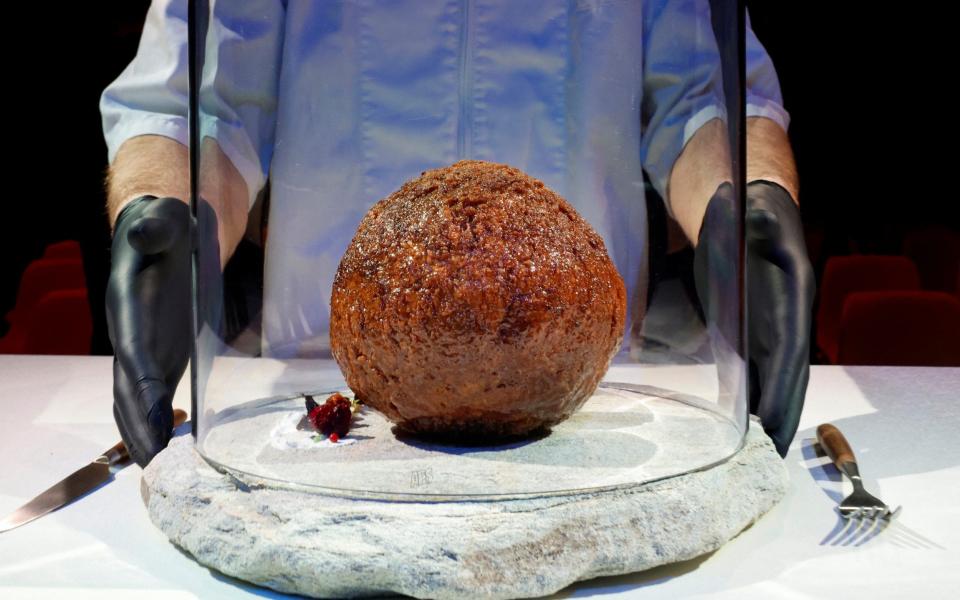Pictured: Giant meatball created using woolly mammoth flesh

A mammoth meatball has been created using the resurrected flesh of the long-extinct animal.
It was produced by a cultivated meat company as part of a project trying to demonstrate the potential of growing flesh from cells without slaughtering animals.
Vow, the Australian company behind the innovation, is aiming to use cells from unconventional species to create new kinds of meat, while highlighting the link between large-scale livestock production and the destruction of wildlife and the climate crisis.
But no one has yet tasted the mammoth meatball, as the scientists behind it say they would have “no idea how our immune system would react when we eat it.”
The company has already investigated the potential of more than 50 species, including alpaca, buffalo, crocodile, kangaroo, peacocks and different types of fish.
Japanese quail is set to be the first cultivated meat to be sold to diners, and is expected to be available in restaurants in Singapore later this year.

Tim Noakesmith, the co-founder of Vow, said: “We chose the woolly mammoth because it’s a symbol of diversity loss and a symbol of climate change.”
The mammoth is thought to have been driven to extinction thanks to hunting by humans and global warming following the last ice age.
Vow worked with Prof Ernst Wolvetang, at the Australian Institute for Bioengineering at the University of Queensland, to create the mammoth protein.

His team took the DNA sequence for mammoth myoglobin, a key muscle protein in giving meat its flavour, and filled in the gaps using elephant DNA.
“We haven’t seen this protein for thousands of years,” Prof Wolvetang told the Guardian. “So we have no idea how our immune system would react when we eat it. But if we did it again, we could certainly do it in a way that would make it more palatable to regulatory bodies.”
He added: “It’s a little bit strange and new – it’s always like that at first. But from an environmental and ethical point of view, I personally think [cultivated meat] makes a lot of sense.”
The mammoth meatball was unveiled on Tuesday at Nemo, a science museum in the Netherlands.

